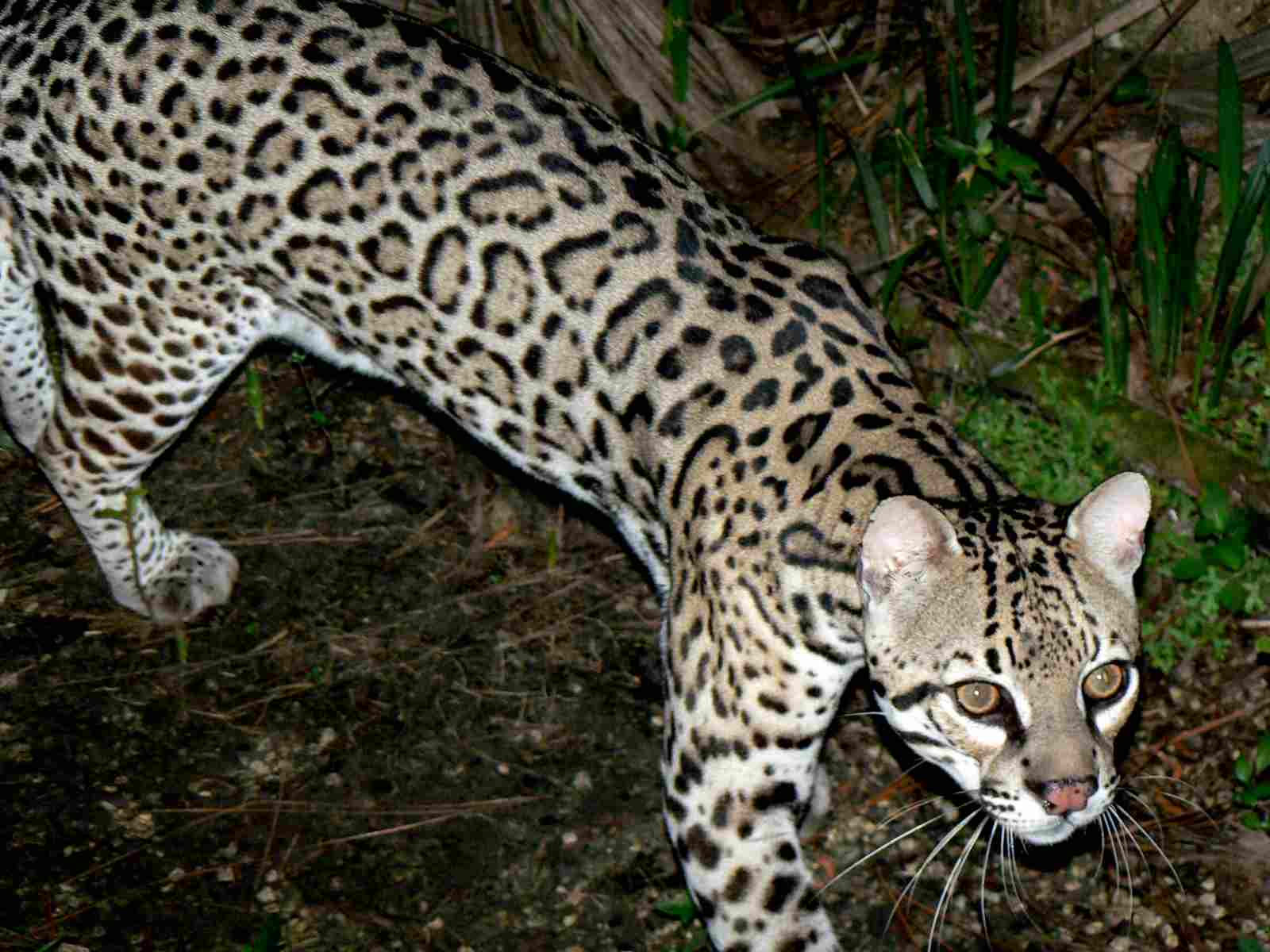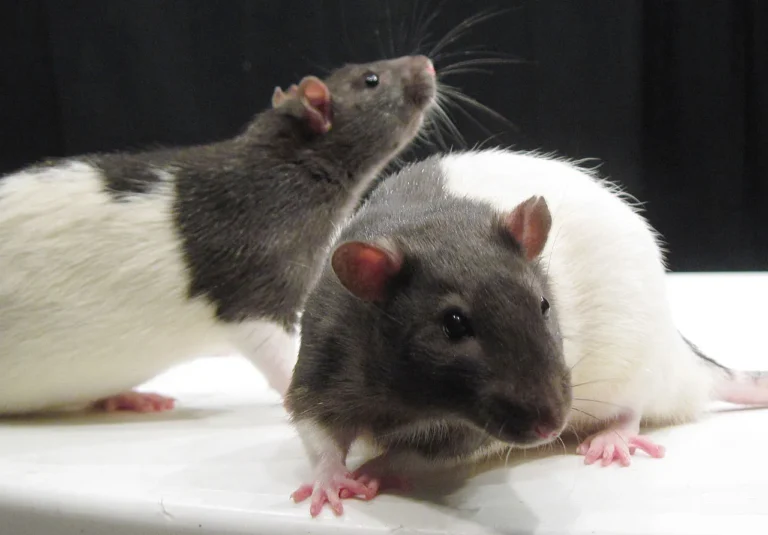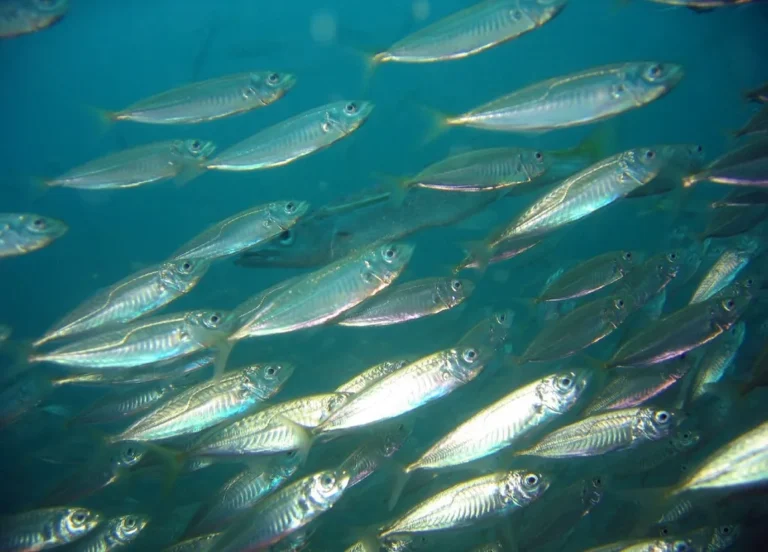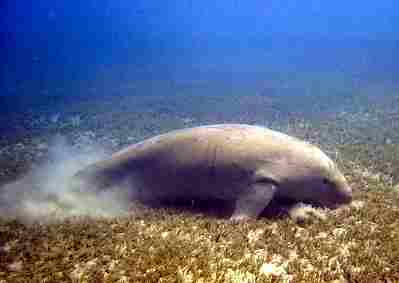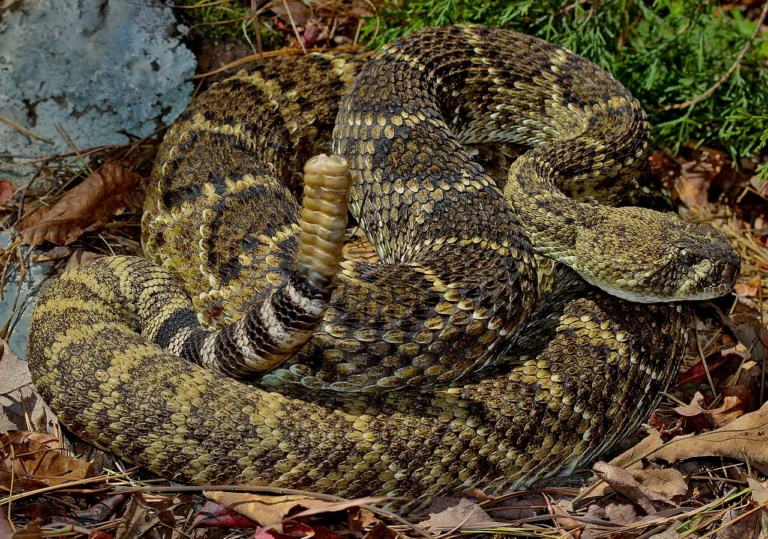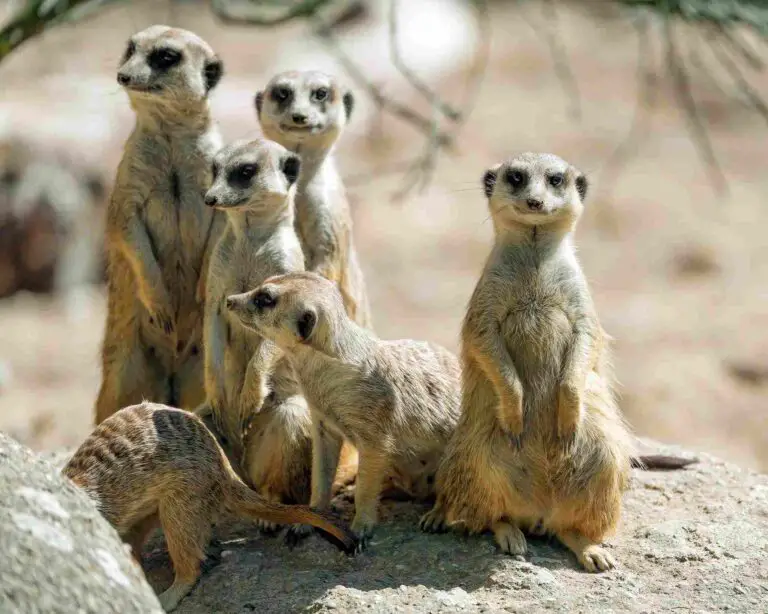Predation in the Amazon Rainforest and Examples, Functions
Predation in the Amazon Rainforest is the process whereby Amazonian predators feed on prey.
This article discusses predation in the Amazon Rainforest in terms of its concept, components, examples and relevance, as outlined below;
-Meaning of Predation in the Rainforest
-Predators in the Amazon Rainforest
-Prey in the Amazon Rainforest
-Examples of Predation in the Amazon Rainforest
-Functions and Relevance of Predation in the Amazon Rainforest
Meaning of Predation in the Rainforest
Predation in the rainforest is an essential biological interaction that involves the consumption of lower or vulnerable species by higher or advantaged species.
This interaction is significant in its role toward shaping the conditions and processes of the complex forest ecosystem. Predation is a natural process where one organism or species, known as the predator, hunts, captures, and consumes another organism, which is referred to as the prey [4].
This interaction can be considered part of a broader ecologic spectrum of feeding behaviors and relations that also includes parasitism, micropredation (which typically does not kill the host), and parasitoidism (which always results in the host's death).
*Key Points on Predation in the Rainforest
Predation in the rainforest must be discussed with reference to terms and phenomena like; predator-prey relationship, population control, herbivorous 'predation', and apex predators. Each of these is briefly discussed in this section.
Predator-prey relationship is the core component of predation in the rainforest. The predator species plays the role of active hunting, capture, and consumption of the prey which serves as a source of food and bioenergy. This dynamic interaction has a measurable influence on both predator and prey populations.
It is well known that predation functions as a natural mechanism of population control within the rainforest ecosystem [12]. Predators, which are usually higher up in the rainforest food chain, target lower consumers (such as primary and secondary categories). By doing so, the predators help regulate populations of these lower-level organisms, preventing overpopulation and sustaining the equilibrium and resources within the ecosystem.
There are some schools of thought that portray herbivory as a specific form of predation. It occurs when the prey organism is a (vascular or non vascular) plant. In the rainforest, many animals, known as herbivores, consume plant matter as their primary food source. This interaction affects plant populations, and several plants in the rainforest have evolved various defenses to deter herbivores, such as toxic secretions and thorns [9].
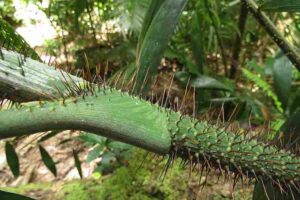
The trophic interactions that occur between rainforest predators and their prey are dynamic, and intricately interconnected. As a result, changes in predator population sizes, distributions and adaptations, can all influence prey populations, and vice versa. These dynamics have ripple effects that are felt throughout the multiple trophic levels of the food web, and impact multiple species within the rainforest ecosystem.
Predation can help to prevent dramatic fluctuations in the populations of various species within the rainforest, especially in the form of population explosions. It acts as a natural gauge system that keeps ecosystems stable, and contributes to long-term sustainability.
Apex predators are vital natural tools for implementing predation rainforest ecosystems, and often occur at the top of the food chain. These organisms are the fiercest and most dominant predatory competitors, and exert top-down control over other species. They are therefore critical toward regulating the populations of organisms below them.
Predators in the Amazon Rainforest and Their Adaptations for Survival
The Amazon Rainforest is inhabited by an incredible array of predators, each species of which is uniquely adapted to the conditions and demands of its environment. These predators are crucial as instruments for shaping the intricate web of life within the forest ecosystem.
Examples of predators in the Amazon Rainforest are; arapaima, black caiman, bull shark, electric eel, giant otter, green anaconda, harpy eagle, and jaguar. They range in habitat from terrestrial forested zones to aquatic environments.
In this section, predators of the Amazon Rainforest, along with their adaptations for survival are discussed in the order listed above.
1). Arapaima in the Amazon
Arapaimas are large, air-breathing fish that are distinctive for their size, morphology and strength. They are equipped with specialized gills that are used to extract oxygen from the air, making them well-suited to the oxygen-limited waters of the Amazon River ecosystem [11]. Their large size serves as a natural deterrent to other predators, and enables them subdue their prey.
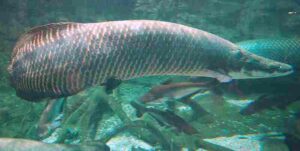
2). Black Caiman
The black caiman is the largest member of the Alligatoridae family, as well as one of the largest predators in the Amazon basin [6]. It possesses powerful jaws and an acute sense of smell, which make it a formidable aquatic hunter. The dark coloration of black caimans aids in concealment and stealth while hunting, and their tough scales provide mechanical protection.
3). Bull Shark
Bull sharks are predatory fish with the ability to thrive in both freshwater and saltwater habitats. Their physiological features enable them to osmoregulate, thereby allowing them to adapt to various salinity levels. They are also strong swimmers and highly sensitive, opportunistic predators.
4). Electric Eel
Electric eels are not true eels but are a type of knifefish (related to carp and catfish) with a specialized nervous system that comprises of thousands of electricity-generating cells referred to as electrocytes [2]. They produce electric shocks by discharging these cells, which they use for communication and navigation, as well as for stunning prey. This unique adaptation helps them locate prey in murky waters where visibility is limited.
5). Giant Otter
Giant otters are a group of social mammalian predators that work together in groups (ranging from 5-10 individuals on average) to hunt fish and other aquatic prey. Their adaptive features include sharp teeth and strong jaws used for grasping and consuming their catch. They have a keen sense of hearing that enables them detect underwater sounds from potential prey.
6). Green Anaconda
Green anacondas are the largest and heaviest snakes in the world [10], with some exceeding 220 kg in total body weight. They can be described as expert swimmers and ambush predators. The large size of green anacondas enables them to overpower and constrict large prey, They also possess effective camouflage reduces their visibility in the water or on land.
7). Harpy Eagle
Harpy eagles are powerful and agile, avian hunters that inhabit the Amazon Rainforest canopy. They have large talons and strong beaks which are used to capture and kill prey, which often include monkeys and sloths. Their keen eyesight enables them to spot prey from great heights.
8). Jaguar
Jaguars are top predators whose distinctive attributes include their strength, stealth and agility. They are equipped with powerful jaws and sharp teeth for crushing the skulls of their prey. Their spotted coat also provides a reliable camouflage in the mottled light of the rainforest.
*Main Predator of the Amazon Rainforest
The title of the "main" predator in the Amazon Rainforest is a subjective one, as it is dependent on the specific ecological niche and location within the vast rainforest. However, apex predators like harpy eagles and jaguars are often considered top contenders due to their far-reaching influence and ecological significance.
*Largest Predator in the Amazon
The black caiman is the largest predator in the Amazon River basin, with adult males averaging around 4 meters (13.1 feet) in length and over 600 lbs in weight.
Jaguars are regarded as apex predators in the Amazon Rainforest. They occupy the highest trophic level in the food chain and have no natural predators within their ecosystem. While jaguars are not known to prey on adult black caimans, they are major consumers of smaller caiman species as well as juveniles, and are more versatile in their predation range and strategy, than black caimans.
It is challenging to pinpoint a single "top" predator in the rainforest due to the complex web of interactions, although apex predators like jaguars are often considered the top predators because of their substantial impact on both prey populations and the overall ecosystem dynamics.
Prey in the Amazon Rainforest and Their Adaptations for Survival Amidst Predators
The Amazon Rainforest hosts a plethora of prey species, each of which, like their predators, possesses unique adaptations that enable it to survive in a complex web of predators, ecological niches, and human-driven impacts.
Prey in the Amazon Rainforest include; monkeys, birds, wild pigs, armadillos, capybaras, deer, turtles,
Here, examples of prey that inhabit the Amazon Rainforest and their distinctive adaptations for survival, are discussed in the order listed above.
1). Monkeys
Several species of monkeys in the Amazon have developed defensive mechanisms in the form of keen sensitivity, agility, intelligence, and group cooperation. These animals utilize their sharp senses to detect predators, and rapidly seek refuge in the treetops. Some monkeys, such as howler monkeys, use vocalizations to warn their troop of approaching threats [3].
Small monkey species, like tamarins and marmosets, are adept at avoiding predators using their diminutive size and agility. They often use tree hollows and dense overgrowth as refuge. Their cryptic coloration enables them blend into the forest canopy.
2). Birds
Amazonian birds are potential predators as well as prey to mammals, reptiles, insects, other birds (raptors), and a few other organic groups. To survive, they exhibit various adaptations, including speed, camouflage, and the ability to navigate dense foliage. Species such as toucans are equipped with strong bills for consuming fruits and insects, while birds of prey, like harpy eagles, are highly skilled hunters with powerful talons.
3). Ungulates
Ungulates are an important category of prey animals in the Amazon. Two classic examples of these mammals are peccary and deer.
3(a). Pecarries (Tayassu tajacu), are pig-like mammals that possess defensive structures like strong tusks for fending off threats. They often travel in groups, where they depend on collective vigilance to detect predators early. Their omnivorous feeding habit (they can consume plant materials, insects, reptiles, worms, and carrion) is another adaptive feature that provides versatility in finding food.
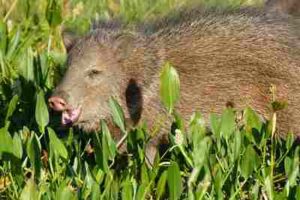
3(b). Deer species in the Amazonian region, like the red brocket deer, are generally agile and fleet-footed. They rely on speed and their ability to leap through dense undergrowth to escape predators. Their cryptic coloration provides camouflage in the forest.
4). Armadillos
Armadillos are well-armored species with protective shells, which are sometimes targeted by predators like anacondas, alligators, raptors and felines. When threatened, they are able to curl into a ball, making them difficult to access for predators. Their burrowing abilities also allow them to escape threats by hiding in underground crevices.
5). Capybara
Capybaras are the world's largest rodents, and highly social animals that typically form large groups. Their alertness and keen senses enable them to detect approaching predators. When threatened on land, they tend to seek refuge in water bodies like ponds and lakes (which they also use for thermoregulation), where their webbed feet make them excellent swimmers.
6). Turtles
Aquatic turtles possess strong, protective shells that serve as shields defending them from predators. They have adapted to a life in water, where they are less vulnerable to terrestrial hunters. River turtles often have streamlined morphologies for efficient swimming.
*Example of Prey in the Rainforest
One classic example of prey in the Amazon Rainforest is the capybara. Capybaras are herbivorous rodents that have evolved diverse adaptations for survival, including social behavior, keen senses, swimming capability and the tendency to seek refuge in water when threatened by terrestrial predators. These adaptations make them well-suited to coexisting with Amazonian predators like the jaguar.
Generally, prey species in the Amazon Rainforest have evolved a diverse range of strategies to evade predation, which contribute to the disparity of life forms in this biodiverse ecosystem.
Examples of Predation in the Amazon Rainforest
The Amazon Rainforest is characterized by diverse predator-prey relationships, which showcase the intricate web of life in this ecosystem. Examples of predation in the Amazon Rainforest range from aquatic, ground-level terrestrial, and arboreal processes, as enumerated and discussed in this section.
1). Harpy Eagle and Macaw
Predator Species: The harpy eagle
Prey Species: Macaws (and other birds)
The harpy eagle, a powerful, avian apex predator, hunts mammals like monkeys, as well as birds like macaws [6]. It perches high in the canopy where it waits for prey, and swoops down to snatch them with its powerful talons.
2). Jaguar and Capybara
Predator Species: The jaguar
Prey Species: Capybaras, peccaries (and other mammals)
Jaguars are highly skilled stalkers and ambush predators, which utilize sheer stealth to approach their prey and deliver a powerful bite that usually killing it instantly. Capybaras are one of their primary prey species, so that the presence and dynamics of jaguars can affect the latter's population.
3). Black Caiman and Fish
Predator Species: The black caiman
Prey Species: Fish (as well as birds, reptiles and mammals)
As earlier stated, the black caiman is the largest predator in the Amazon River basin. It uses stealth and underwater ambush tactics to capture prey, particularly fish, that venture close to the shallow zones of the water.
4). Anaconda and Various Prey
Predator Species: The anaconda (green anaconda)
Prey Species: Fish, birds, capybaras, and other aquatic, semi-aquatic and terrestrial animals
Anacondas are large, constrictor snakes which are known for their ability to capture and kill prey through constrictive suffocation. They primarily inhabit swamp areas [8], where they hunt aquatic animals and rely on stealth and water-based ambushes.
5). Harpy Eagle and Sloth
Predator Species: The harpy eagle
Prey Species: Sloths (as well as birds, reptiles, and other small mammals)
Harpy eagles are opportunistic hunters, and prey on sloths with relatively high frequency, which can be attributed to factors like the slow locomotion and arboreal exposure of the latter. Their powerful talons enable them to capture and carry sloths through the forest canopy.
6). Ocelot and Rodents
Predator Species: The ocelot
Prey Species: Rodents like agoutis and pacas
Ocelots are agile and nocturnal, feline hunters. They utilize their keen senses of hearing and sight to locate small mammals like rodents and pounce on them.
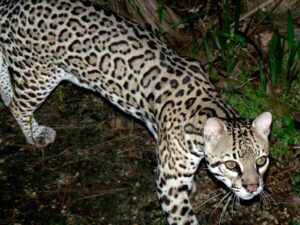
7). Piranhas and Small Fish
Predator Species: Piranhas (carnivorous fish).
Prey Species: Small fish
Piranhas hunt in schools, and have distinctive physiological features such as large head, strong jaws and sharp teeth, that support their voracious feeding habits. Their most regular prey are fish and mollusks, although they exhibit insectivorous and omnivorous tendencies as well.
Piranhas are opportunistic predators, and usually attack injured or weakened animals.
8). Electric Eel and Fish
Predator Species: Electric eel
Prey Species: Fish
Electric eels generate electric shocks to stun prey (which they locate using hair-like projections or electroreceptors located along their lateral line [1]). The stunned prey is then typically swallowed
High-sensitivity adaptations make the electric eel a skilled hunter in murky Amazonian waters with low visibility for locating prey.
9). Alligator Snapping Turtle and Fish
Predator Species: Alligator snapping turtle
Prey Species: Fish
Alligator snapping turtles utilize a lure-like appendage in their mouth to attract fish. When a fish comes close, the turtle ambushes by snapping its powerful jaws shut.
These examples collectively illustrate the intricate and detailed nature of predator-prey relationships in the Amazon Rainforest, where each species has developed unique adaptations for survival and predation.
A classic example of predation in the Amazon rainforest is the jaguar preying on capybaras, where jaguars utilize their stealth, strong jaws and teeth as adaptive tools for survival.
Functions and Relevance of Predation in the Amazon Rainforest
As earlier stated, predation is a fundamental ecological process occurring in the Amazon Rainforest. It therefore serves several important functions and plays a critical role in the dynamics and equilibrium of the ecosystem.
Functions of predation in the Amazon Rainforest are; population control, energy transfer, biodiversity/species richness maintenance, ecological balance, seed dispersal, trophic structuring, evolution facilitation, and other ecosystem services. These functions are enumerated and further discussed below.
1). Population Control
Predation functions as a mechanism for controlling the population dynamics of various species in the rainforest. Predators help to regulate prey populations by consuming individuals, which prevents overpopulation of certain species, and associated consequences like resource depletion.
2). Energy Transfer
Predation facilitates the flow of energy through the levels of food web. In the process, predators acquire energy by consuming prey, which enables them to grow, reproduce, and achieve generational continuity. This energy transfer dynamic extends to higher trophic levels, so that it ultimately supports the entire ecosystem.
3). Biodiversity Maintenance
Predation contributes to the maintenance of biodiversity by creating niches for a variety of species. The presence of diverse predators and prey species within the Amazon Rainforest promotes local species richness and diversity.
4). Ecological Balance
Ecological balance is maintained through predation, by the prevention of single-species numeric dominance. When predators keep prey populations in check, it reduces the intensity of competition for resources among prey species, and ensures a more balanced distribution of food and habitats.
5). Seed Dispersal
Some predators, including omnivorous mammals, inadvertently contribute to seed dispersal as they consume fruits and seeds [5]. This process supports the regeneration and spatial colonization of plant species in the rainforest.
6). Trophic Structure
Predation contributes to establishing the trophic structure of the ecosystem, with different species occupying specific positions in the food web. This hierarchical configuration of species interactions is essential for the recycling of nutrients, and ecosystem stability.
7). Evolutionary Pressures
Selective pressures are exerted on prey species by predators, thereby driving adaptations such as camouflage, speed, burrowing, and defensive mechanisms. This evolutionary/adaptive trend among both predators and prey contributes to the development of diverse survival strategies.
8). Ecosystem Services
Predation provides indirect benefits the Amazon Rainforest ecosystem by preventing herbivore overgrazing, which could otherwise result in habitat degradation. This preventive effect helps to maintain the health and integrity of the entire rainforest.
The primary function of predation is to provide energy for the survival of predatory organisms, as well as their growth and reproduction, while regulating the populations of prey species. Predation is a key facilitator and maintainer of ecological processes, biodiversity, and the trophic structure of ecosystems.
Conclusion
Predation in the rainforest is a basic biological interaction that comprises of the consumption of lower or vulnerable organisms by higher or advantaged ones.
Examples of predators in the Amazon Rainforest are;
1. Arapaima
2. Black Caiman
3. Bull Shark
4. Electric Eel
5. Giant Otter
6. Green Anaconda
7. Harpy Eagle
8. Jaguar
Prey in the Amazon Rainforest include;
1. Monkeys
2. Birds
3. Ungulates
4. Armadillos
5. Capybara
6. Turtles
Examples of predation in the Amazon Rainforest are;
1. Harpy Eagle and Macaw
2. Jaguar and Capybara
3. Black Caiman and Fish
4. Anaconda and Various Prey
5. Harpy Eagle and Sloth
6. Ocelot and Rodents
7. Piranhas and Small Fish
8. Electric Eel and Fish
9. Alligator Snapping Turtle and Fish
Functions of predation in the Amazon Rainforest are;
1. Population Control
2. Energy Transfer
3. Biodiversity Maintenance
4. Ecological Balance
5. Seed Dispersal
6. Trophic Structure
7. Evolutionary Pressures
8. Ecosystem Services
Predator Species | Prey Species |
Alligator Snapping Turtle | Fish, frogs, other turtles, mollusks, carrion, crayfish, snakes, water birds; muskrats, juvenile crocodilians |
Arapaima | Fish, crustaceans, mammals, insects (may also consume non-animal biomass from fruits and seeds) |
Black Caiman | Fish, turtles, semi aquatic mammals, terrestrial mammals, snakes, amphibians, birds (their diet includes other predators like piranhas, giant otters and pythons) |
Bull Shark | Fish, dolphins, other shark, turtles. sting rays, shrimp, crabs, birds |
Electric Eel | Fish, crustaceans, amphibians, reptiles, mammals |
Giant Otter | Fish (including piranhas and catfish), small caimans, frogs, crabs, snakes, shrimp |
Green Anaconda | Fish, birds, turtles, small mammals, large mammals (including capybara, tapirs, peccaries and deer), caimans |
Harpy Eagle | Monkeys, sloths, anteaters, opossums, macaws, vultures, porcupines, squirrels, snakes |
Jaguar | Deer, capybaras, pacas, tortoises, agouti, snakes, peccaries, armadilos, squirrels, iguanas, birds, fish, caimans |
Ocelot | Squirrels, pacas, agoutis, birds, armadillos, juvenile deer, juvenile peccaries, capybaras, sloths, fish |
Piranha | Small fish, worms, crustaceans, mollusks, insects, amphibians, lizards, rodents |
Alligator Snapping Turtle (Amazon Rainforest Predator)
This formidable turtle preys on a variety of animals, including fish, frogs, other turtles, mollusks, carrion, crayfish, snakes, and water birds. It may also target muskrats and even juvenile crocodilians as prey.
Arapaima (Amazon Rainforest Predator)
The Arapaima primarily feeds on fish and crustaceans. It may also consume insects and occasionally non-animal biomass from fruits and seeds.
Black Caiman (Amazon Rainforest Predator)
As one of the largest predators in the Amazon, the Black Caiman has a diverse diet that includes fish, turtles, semi-aquatic mammals, terrestrial mammals, snakes, amphibians, and birds. Remarkably, it can even prey on other predators like piranhas, giant otters, and pythons.
Bull Shark (Amazon Rainforest Predator)
The Bull Shark preys on a variety of aquatic creatures, including fish, dolphins, other sharks, turtles, stingrays, shrimp, crabs, and birds.
Electric Eel (Amazon Rainforest Predator)
Despite its name, the Electric Eel primarily feeds on other animals. Its diet includes fish, crustaceans, amphibians, reptiles, and occasionally mammals.
Giant Otter (Amazon Rainforest Predator)
Giant Otters are piscivorous fish hunters and primarily feed on fish, including piranhas and catfish. They also consume small caimans, frogs, crabs, snakes, and shrimp.
Green Anaconda (Amazon Rainforest Predator)
The Green Anaconda is a formidable predator that preys on a range of animals, including fish, birds, turtles, small mammals, and even large mammals like capybaras, tapirs, peccaries, and deer. It also consumes caimans.
Harpy Eagle (Amazon Rainforest Predator)
Harpy Eagles are powerful avian predators that feed on a variety of animals, including monkeys, sloths, anteaters, opossums, macaws, vultures, porcupines, squirrels, and snakes.
Jaguar (Amazon Rainforest Predator)
Jaguars are apex predators and consume a wide array of prey, including deer, capybaras, pacas, tortoises, agouti, snakes, peccaries, armadillos, squirrels, iguanas, birds, fish, and even caimans.
Ocelot (Amazon Rainforest Predator)
Ocelots are skilled hunters that prey on animals such as squirrels, pacas, agoutis, birds, armadillos, juvenile deer, juvenile peccaries, capybaras, sloths, and fish.
Piranha (Amazon Rainforest Predator)
Piranhas are known for their carnivorous appetite, feeding on small fish, worms, crustaceans, mollusks, insects, amphibians, lizards, rodents, and occasionally carrion.
References
1). Baker, V. H.; Modrell, M. S.; Gillis, A. (2013). "The evolution and development of vertebrate lateral line electroreceptors." Journal of Experimental Biology 216(Pt 13):2515-22. Available at: https://doi.org/10.1242/jeb.082362. (Accessed 24 September 2023).
2). Catania, K. C. (2015). "Electric Eels Concentrate Their Electric Field to Induce Involuntary Fatigue in Struggling Prey." Current Biology 25(22). Available at: https://doi.org/10.1016/j.cub.2015.09.036. (Accessed 24 September 2023).
3). da Cunha, R.; de Oliveira, D. A. G.; Holzmann, I.; Kitchen, D. M. (2015). "Production of Loud and Quiet Calls in Howler Monkeys." Available at: https://doi.org/10.1007/978-1-4939-1957-4_13. (Accessed 24 September 2023).
4). Griffiths, D. (1976). "Prey Availability and the Food of Predators." Ecology 56(5):1209-1214. Available at: https://doi.org/10.2307/1936161. (Accessed 24 September 2023).
5). Karimi, S.; Hemami, M.-R.; Tarkesh, M.; Baltzinger, C. (2019). "Endozoochorous dispersal by herbivores and omnivores is mediated by germination conditions." Available at: https://doi.org/10.21203/rs.2.15402/v2. (Accessed 24 September 2023).
6). Laverty, T. M.; Dobson, A. P. (2013). "Dietary overlap between Black Caimans and Spectacled Caimans in the Peruvian Amazon." Herpetologica 69(1):91-101. Available at: https://doi.org/10.1655/herpetologica-d-12-00031. (Accessed 24 September 2023).
7). Lerner, H. R.; Johnson, J. A.; Lindsay; A. R.; Kiff, L. F.; Mindell, D. P. (2009). "It's not too late for the harpy eagle (Harpia harpyja): high levels of genetic diversity and differentiation can fuel conservation programs." PLoS One. 2009 Oct 5;4(10):e7336. Available at: https://doi.org/10.1371/journal.pone.0007336. (Accessed 24 September 2023).
8). McCartney-Melstad, E.; Waller, T.; Micucci, P.; Barros, M.; Draque, J. F.; Amato, F.; Mendez, M. (2012). "Population Structure and Gene Flow of the Yellow Anaconda (Eunectes notaeus) in Northern Argentina." PLoS ONE 7(5):e37473. Available at: https://doi.org/10.1371/journal.pone.0037473. (Accessed 24 September 2023).
9). Ruttan, A.; Lortie, C. J. (2015). "A systematic review of the attractant-decoy and repellent-plant hypotheses: Do plants with heterospecific neighbours escape herbivory?" Journal of Plant Ecology 8(4). Available at: https://doi.org/10.1093/jpe/rtu030. (Accessed 24 September 2023).
10). Sahibdeen, R. (2011). "Eunectes murinus - Green Anaconda or Huille." The Online Guide to The Animals of Trinidad and Tobago. Available at: https://www.researchgate.net/publication/330423736_Eunectes_murinus_-_Green_Anaconda_or_Huille. (Accessed 24 September 2023).
11). Scadeng, N.; Mckenzie, C. M.; He, W.; Bartsch, H.; Dubowitz, D. J.; Stec, D.; Leger, J. St. (2020). "Morphology of the Amazonian Teleost Genus Arapaima Using Advanced 3D Imaging." Frontiers in Physiology 11. Available at: https://doi.org/10.3389/fphys.2020.00260. (Accessed 24 September 2023).
12). Silman, M. R.; Terborgh, J.; Kiltie, R. A. (2003). "Population regulation of a dominant-rain forest tree by a major seed-predator." Ecology 84(2):431-438. Available at: https://doi.org/10.1890/0012-9658(2003)084[0431:PROADR]2.0.CO;2. (Accessed 24 September 2023).
